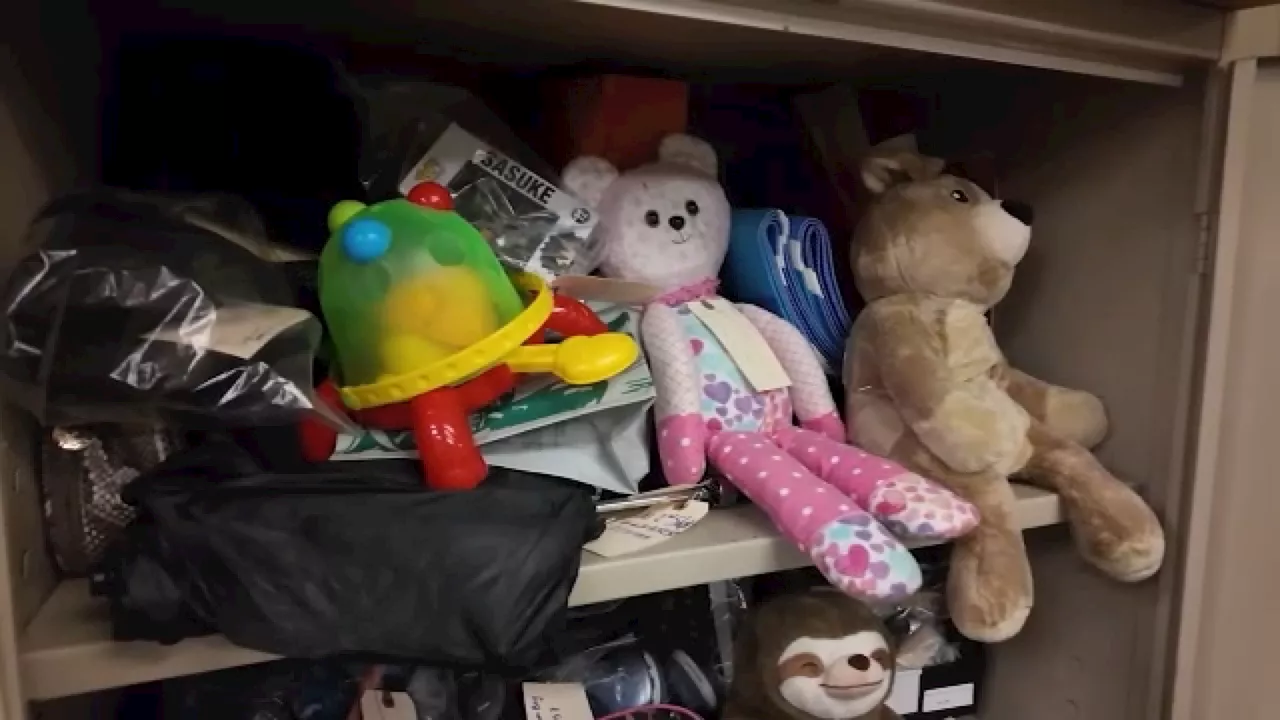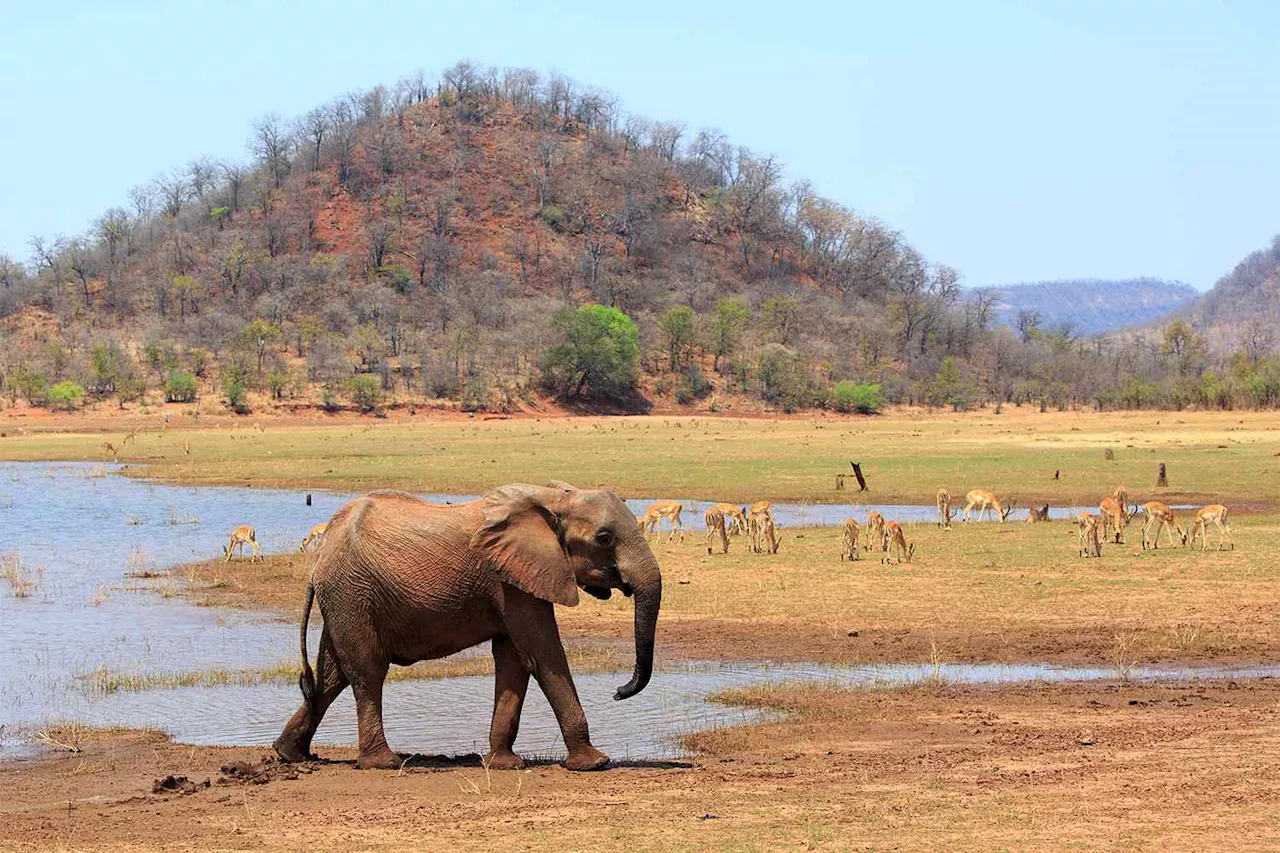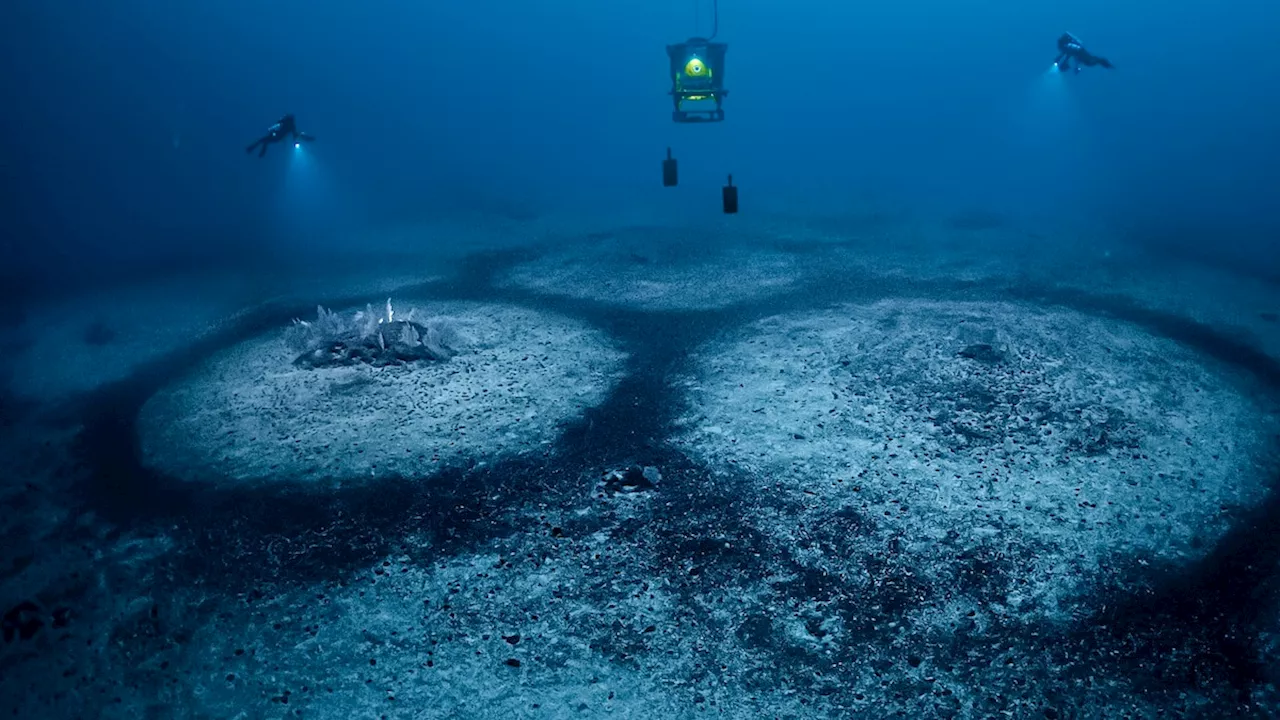Hundreds of perfect circles discovered on the Mediterranean seabed led to a four-year research journey revealing a lost underwater world. Marine biologists discovered a vibrant ecosystem teeming with rare and colorful sea life, including seldom-seen yellow coral, near the mysterious formations.
When hundreds of eerily perfect circles were discovered on the bottom of the Mediterranean Sea , theories abounded about what they could mean. Four years of underwater research revealed a lost world.Marine biologist named Christine Pergent-Martini was hunkered down inside the cabin of a small research vessel, a 97-foot-long catamaran, cruising through the Mediterranean Sea about 12 miles off the coast of Corsica.
The scientists looked at each other. “We had no idea what it was,” Pergent-Martini says. Her team carefully logged their location and used a remotely operated vehicle to gather images. After years of applying for grants to study the rings more closely, the Pergents reached a dead end. “It was very difficult to obtain money,” Pergent-Martini said. The Pergents are specialists in seagrass meadows, and this was a bit outside their focus. “We had no way to go farther.” Then, just the right person got in touch. In the world of undersea exploration, Laurent Ballesta is known for going to extremes.
“How is this possible?” he remembers thinking. Perhaps they were craters caused by erupting underwater vents or a strange geological formation. Pergent-Martini and her husband had a different hunch. Based on their submersible explorations, they believed the rings were coralline algae growing in a previously unknown shape. Another theory, put forth by some scientists, was that they were craters left by unused World War II bombs jettisoned by U.S. planes returning to their bases on Corsica.
After he snapped some photos, Ballesta dived to the bottom and approached one ring. At its center was a large knob made by red calcareous algae, measuring around three feet high and several feet across, with swaying fanlike growths atop it. The knob was surrounded by a vast wasteland of pale, scree-like debris.
There was still no explanation for why the rhodoliths would have formed such perfect circles so many times over. Ballesta decided he needed to spend more time among the rings, which would require a way to stay longer in the depths. The team had expected to spend three weeks exploring the rings and nearby reefs, but the weather turned against them. Heavy wind and waves rocked the boat, making leaving the chamber dangerous on several occasions. For multiple days, the four men were trapped, unable to see out of their increasingly humid chamber, which barely held their small beds and a dining table. Ballesta’s voice turns bitter as he recalls this period.
When the results came back, the team was shocked. The most ancient material, deep in the center of the knobs, was about 21,000 years old. For those who study climate history, that particular era represents a moment of profound planetary change. “It’s the last glacial maximum,” says paleoclimatologist Edouard Bard of the Collège de France, who organized the carbon dating. That was the peak of the last ice age.
Underwater Exploration Marine Biology Mediterranean Sea Coral Reefs Sea Life
United States Latest News, United States Headlines
Similar News:You can also read news stories similar to this one that we have collected from other news sources.
 Lost Luggage and More: TSA's Lost and Found at Newark Liberty AirportA look inside the TSA's Lost and Found Office at Newark Liberty International Airport reveals a surprising collection of items left behind by travelers. From everyday essentials to valuable possessions, the office works diligently to reunite lost items with their owners.
Lost Luggage and More: TSA's Lost and Found at Newark Liberty AirportA look inside the TSA's Lost and Found Office at Newark Liberty International Airport reveals a surprising collection of items left behind by travelers. From everyday essentials to valuable possessions, the office works diligently to reunite lost items with their owners.
Read more »
 Mediterranean Diet Ranked as Best Diet by U.S. News & World ReportThe Mediterranean Diet tops the list of best diets according to U.S. News & World Report's latest ranking. The report evaluated a wide range of eating plans, considering factors like health benefits, ease of following, and nutritional value.
Mediterranean Diet Ranked as Best Diet by U.S. News & World ReportThe Mediterranean Diet tops the list of best diets according to U.S. News & World Report's latest ranking. The report evaluated a wide range of eating plans, considering factors like health benefits, ease of following, and nutritional value.
Read more »
 Marlow’s Story of the Year: Before They Lost the Election, the Democrats Lost Their FastballSource of breaking news and analysis, insightful commentary and original reporting, curated and written specifically for the new generation of independent and conservative thinkers.
Marlow’s Story of the Year: Before They Lost the Election, the Democrats Lost Their FastballSource of breaking news and analysis, insightful commentary and original reporting, curated and written specifically for the new generation of independent and conservative thinkers.
Read more »
 Lost Music from 16th Century Scotland Found in Ancient BookA fragment of music from the early 16th century has been discovered in the pages of Scotland's first full-length printed book, providing insights into the musical practices of pre-Reformation Scotland.
Lost Music from 16th Century Scotland Found in Ancient BookA fragment of music from the early 16th century has been discovered in the pages of Scotland's first full-length printed book, providing insights into the musical practices of pre-Reformation Scotland.
Read more »
 Lost Bunny Found After Social Media AppealA lost bunny toy was reunited with its owner thanks to a neighborhood resident's kindness and social media.
Lost Bunny Found After Social Media AppealA lost bunny toy was reunited with its owner thanks to a neighborhood resident's kindness and social media.
Read more »
 8-Year-Old Boy Found Alive After 5 Days Lost in Zimbabwe Wildlife ParkAn 8-year-old boy miraculously survived five days alone in Zimbabwe's Matusadona National Park, enduring lions, elephants, and the harsh wilderness.
8-Year-Old Boy Found Alive After 5 Days Lost in Zimbabwe Wildlife ParkAn 8-year-old boy miraculously survived five days alone in Zimbabwe's Matusadona National Park, enduring lions, elephants, and the harsh wilderness.
Read more »
